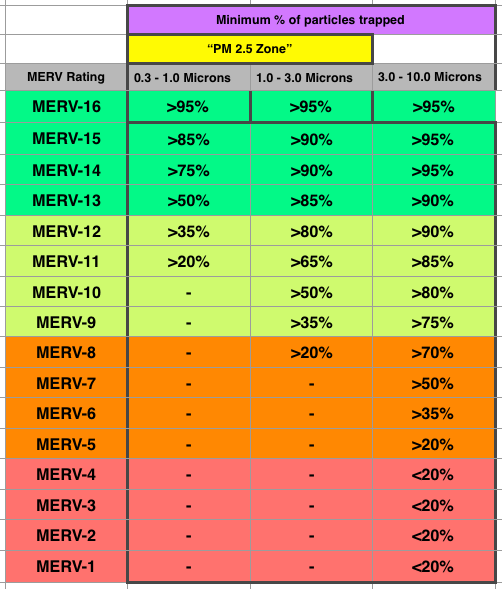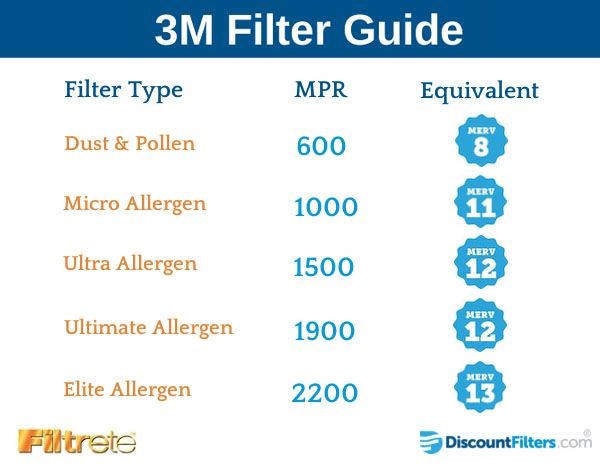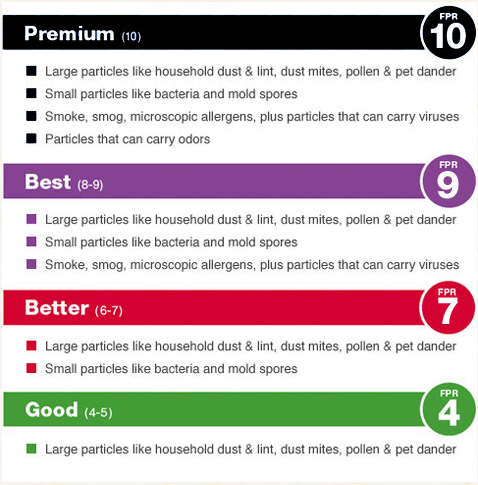
There are three different rating systems for air filters. By far the most popular is the Minimum Efficiency Reporting Value (MERV). We’ve included here a look at the other rating systems and what they mean.
Minimum Efficiency Reporting Value – MERV
When it comes to filter rating systems, MERV is the gold standard. It’s the system utilized by an ASHRAE standard (52.2). In this rating system, the higher the number, the more particles the filter removes from your indoor air and the smaller those particles can be.
For the COVID-19 pandemic of 2020, ASHRAE has started recommending at least MERV-14. Note that you cannot simply install a filter that is a higher grade without checking that your HVAC system is able to handle it.

Credit: John Semmelhack of Think Little
Microparticle Performance Rating – MPR
The Microparticle Performance Rating was created by 3M which manufactures the Filtrete line of filters. This rating system ignores the largest particles and focuses only on how effective a filter is at removing the smallest particles (0.3 to 1.0 microns) from your indoor air.
The reason for this is that if a filter is dense enough to catch the small particles, it is filtering out most of the big particles too. If you are accustomed to using MERV, 3M has an MPR to MERV conversion chart to help you choose the right filter for your HVAC system.

Filter Performance Rating – FPR
This system was created by the Home Depot and shows how well a filter captures both large and small particles utilizing a 1-10 scale. For ease of use the scale is further reduced to just 4 numbers based on a weighted average. 4 is Good, 7 is Better, 9 is Best and 10 is Premium. The values are calculated as follows:
60% of rating = filtration of large particles
30% of rating = filtration of small particles
10% of rating = weight gain over the lifecycle of the filter

